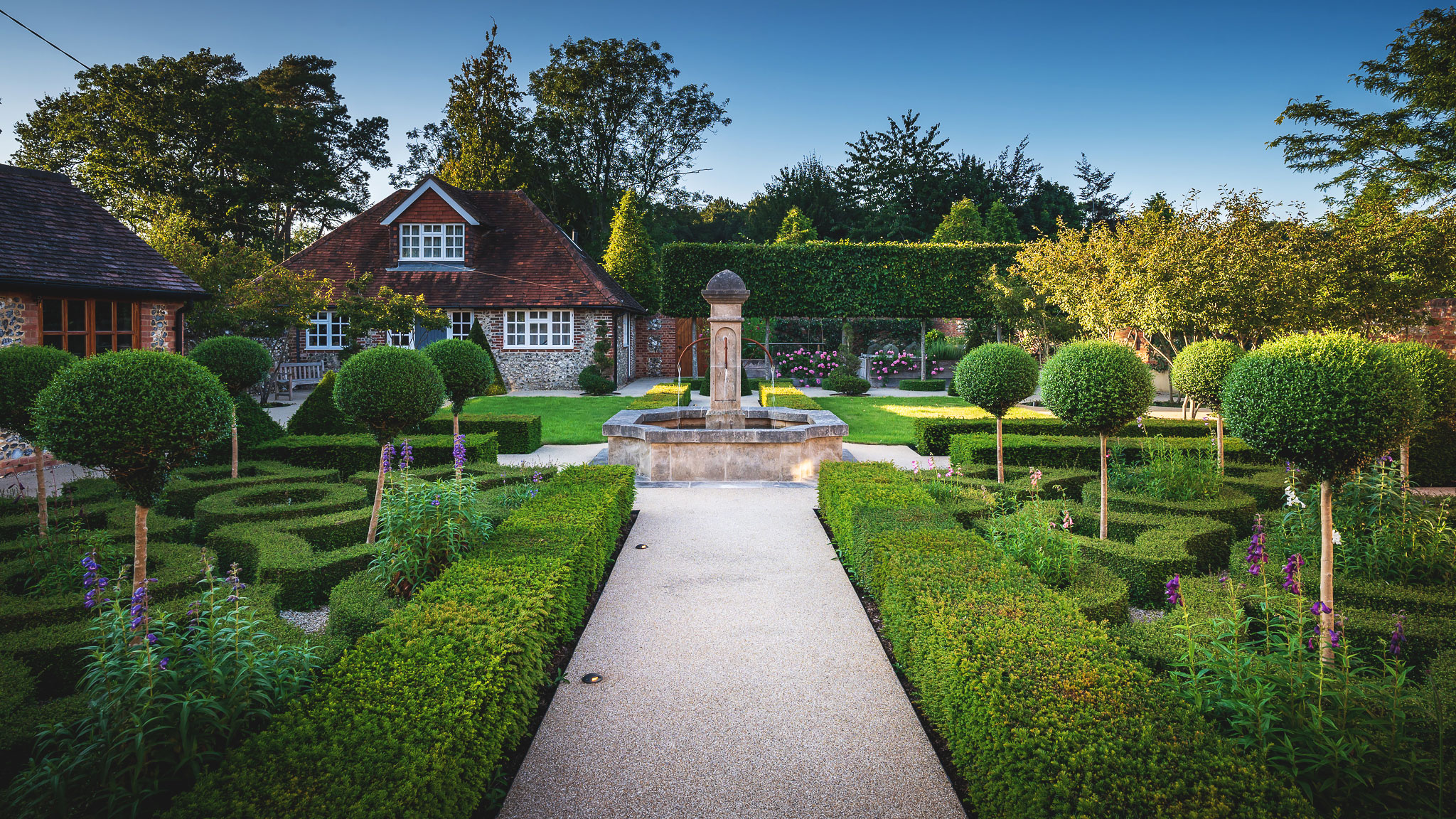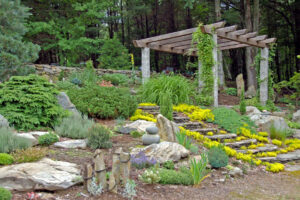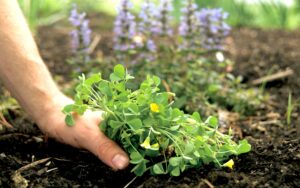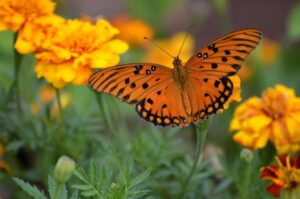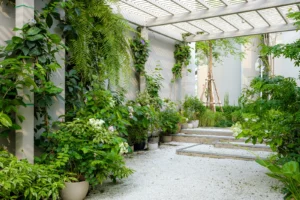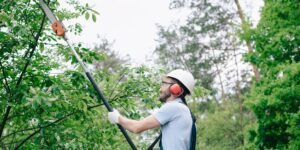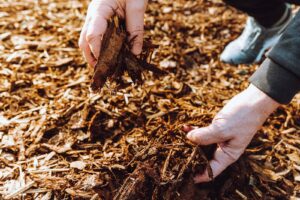Landscaping Guide
Landscaping plays a crucial role in enhancing outdoor spaces, whether it’s for a home, commercial property, or public park. This comprehensive guide will cover all aspects of landscaping, from understanding its meaning to designing your space, selecting plants, and understanding the materials needed. We’ll also discuss the services involved and average pricing in the U.S. market.
1. Meaning of Landscaping
Landscaping refers to the process of modifying the visible features of an area of land to make it more attractive, functional, or environmentally sustainable. It involves the careful planning and installation of both living (flora and fauna) and non-living (hardscape) elements, such as plants, water features, paths, and lighting.
The primary purpose of landscaping is to improve the aesthetic and practical use of outdoor spaces. This includes enhancing curb appeal, creating leisure spaces, promoting sustainability, or increasing the value of a property. Landscaping incorporates multiple disciplines such as botany, horticulture, architecture, and environmental design. Skilled landscapers assess the natural layout of the land, existing plant life, climate conditions, and client preferences to develop a suitable design.
Landscaping is not limited to large estates or public parks; even a small backyard or front lawn can be landscaped to improve its appeal. Whether it’s a minimalistic design with drought-resistant plants or a lush, green lawn with ornate fountains, the ultimate goal of landscaping is to create an outdoor area that is both beautiful and practical.
There are various types of landscaping, such as formal, informal, tropical, desert, and contemporary. Each type has its specific characteristics, plants, and design principles, making landscaping versatile and customizable to fit the needs of any space.
2. Landscaping Ideas
Idea 1: Butterfly Gardens
Butterfly gardens are designed to attract pollinators, particularly butterflies, by incorporating plants that provide nectar and shelter. Butterfly gardens not only add color and vibrancy to a landscape but also support biodiversity by attracting bees, birds, and other pollinators.
Key Plants: Milkweed, lavender, coneflowers, and zinnias are some common plants that attract butterflies.
Water Feature: A shallow birdbath or water feature can be added to provide hydration for butterflies.
Benefits: Butterfly gardens contribute to the ecosystem by promoting pollination, and they are also a visual treat, with colorful butterflies and flowers in bloom throughout the seasons.
Idea 2: Xeriscaping
Xeriscaping focuses on water-efficient landscaping, ideal for areas prone to drought. This style emphasizes the use of native, drought-resistant plants and reduces or eliminates the need for supplemental watering.
Key Plants: Succulents, cacti, agave, and ornamental grasses are popular choices for xeriscaping.
Hardscape Features: Gravel, stone, and mulch are often used to replace grass lawns, making xeriscaping a low-maintenance and eco-friendly option.
Benefits: Xeriscaping conserves water, reduces maintenance costs, and is an environmentally sustainable landscaping option.
Idea 3: English Cottage Gardens
The English cottage garden is a picturesque and informal style characterized by dense, colorful plantings. This style often features a mix of perennials, flowering shrubs, and ornamental trees.
Key Plants: Roses, lavender, daisies, and hydrangeas are common in cottage gardens.
Design Features: Meandering pathways, rustic wooden fences, and stone borders add to the garden’s charm.
Benefits: Cottage gardens are perfect for those who love a lush, flower-filled landscape, providing a sense of timeless beauty and tranquility.
Idea 4: Contemporary Landscaping
Contemporary landscaping is known for its clean lines, minimalistic design, and the use of modern materials. This style often focuses on simplicity and functionality, making it ideal for modern homes.
Key Elements: Geometric patterns, minimal planting, water features, and polished stone or concrete are common in contemporary landscapes.
Plants: Ornamental grasses, succulents, and trees like olive or bamboo add greenery without cluttering the space.
Benefits: Contemporary landscapes offer low-maintenance options with a focus on form and structure. They are perfect for urban settings and modern architecture.
Idea 5: Woodland Gardens
Woodland gardens emulate the natural beauty of a forest, making them ideal for properties near wooded areas. They feature a mix of native plants, wildflowers, and shade-loving plants.
Key Plants: Ferns, hostas, oak trees, and wildflowers such as bluebells are ideal for woodland gardens.
Design Features: Meandering paths, organic mulch, and shaded sitting areas add to the natural charm of a woodland garden.
Benefits: Woodland gardens are low-maintenance and perfect for creating a peaceful, natural retreat.
3. Landscaping Services
Landscaping services encompass a wide range of tasks, from design and installation to maintenance and seasonal care. Here’s an overview of what’s typically covered by a landscaping service and the process involved.
What’s Covered in Landscaping Services:
- Landscape Design: The first step in any landscaping project is the design phase. This includes consultations with the client to understand their preferences, budget, and the property’s unique features. Landscape architects or designers create a comprehensive plan that includes plants, hardscaping, and irrigation systems.
- Installation: Once the design is finalized, the landscaping company will begin the installation process. This could include planting trees, shrubs, and flowers; installing walkways, patios, and retaining walls; setting up irrigation systems; and adding features like lighting, water fountains, and seating areas.
- Maintenance: Ongoing maintenance is an essential part of landscaping services to ensure the health and appearance of the landscape. Services may include lawn mowing, trimming hedges, fertilizing plants, pest control, irrigation system checks, and seasonal clean-ups.
- Specialized Services: Some landscaping companies offer specialized services like tree care (trimming, pruning, and removal), landscape lighting installation, water feature maintenance, and snow removal.
The Process of a Landscaping Service:
- Consultation: The process typically begins with a consultation to discuss the client’s vision, assess the site, and make recommendations. The landscaping company will also provide estimates and timelines during this phase.
- Design and Approval: Once the consultation is complete, the landscaping company will create a detailed design plan. The client reviews the plan, and any necessary adjustments are made before moving forward.
- Installation: After the design is approved, the installation process begins. Depending on the scope of the project, this can take anywhere from a few days to several weeks.
- Final Walkthrough: After installation, the landscaping company will conduct a final walkthrough with the client to ensure that all elements meet their expectations.
- Maintenance Plan: If the client opts for ongoing maintenance, the landscaping company will establish a maintenance schedule based on the property’s needs, including regular visits for lawn care, trimming, and seasonal adjustments.
Choosing a professional landscaping service ensures that every aspect of your outdoor space is handled with care and expertise. Whether it’s a small garden or a large commercial property, a well-maintained landscape adds value and beauty to the surroundings.
4. Pricing
The cost of landscaping services varies widely based on the size of the property, the complexity of the design, and the services required. Below is a general guide to average landscaping costs in the U.S. market.
Average Pricing for Landscaping Services:
| Service | Average Cost (US) |
|---|---|
| Basic Lawn Care (Mowing, Edging) | $50 – $200 per visit |
| Full Landscape Design | $1,500 – $5,000 |
| Planting (Flowers, Shrubs) | $500 – $3,000 |
| Sod Installation | $1,000 – $5,000 |
| Hardscape Installation | $3,000 – $15,000+ |
| Tree Trimming/Removal | $200 – $2,000 |
| Irrigation System Installation | $2,000 – $7,000 |
| Seasonal Clean-Up | $100 – $500 |
Additional Costs:
- Permits and Zoning: Depending on the scale of the project, especially for major hardscape installations, permits may be required, which can add to the overall cost.
- Debris Removal: Some companies charge extra for the removal of waste and debris, especially after major landscaping or tree removal work.
- Custom Features: Water features, outdoor kitchens, fire pits, and other custom elements will increase costs based on material and labor requirements.
What’s Included in Landscaping Costs:
- Labor and Materials: Most landscaping services include both labor and basic materials like mulch, soil, and fertilizer in their quoted price.
- Initial Consultation and Design: Many companies offer free consultations, while others may charge a fee for detailed design plans.
- Maintenance Visits: For ongoing maintenance contracts, the cost typically includes regular lawn care, pruning, and irrigation system checks.
What’s Not Included:
- Large Equipment Rentals: If the project requires heavy machinery, such as for tree removal or excavation, this may incur additional costs.
- High-End Custom Materials: While basic materials are included, custom selections like imported stone or high-end outdoor furniture may not be covered in the initial estimate.
- Additional Services: Specialty services like landscape lighting, advanced irrigation systems, or pest control may be offered at an extra charge.
5. Landscaping Design
Designing a landscape involves more than just selecting plants and laying out walkways. A good landscape design considers the natural environment, functionality, aesthetics
Designing a landscape is an essential step in transforming outdoor spaces into beautiful and functional areas. The process involves careful planning, incorporating natural features, and ensuring the space complements the architecture of the home or property. A thoughtful design maximizes the usability and visual appeal of the area while maintaining harmony with the environment.
How to Start Designing a Landscape
- Assess the Space: Start by evaluating the size, shape, and existing conditions of your property. Take note of the soil type, natural features (like slopes or trees), and sunlight patterns throughout the day.
- Define the Purpose: Consider how you want to use the space. Is it meant for entertaining, relaxation, gardening, or play? Defining the primary purpose helps guide the design decisions, such as the type of plants, seating areas, and pathways you’ll need.
- Create Zones: Divide the landscape into functional zones based on their use. For example, designate areas for dining, gardening, lounging, or play. This helps create a natural flow in the design.
- Choose a Style: Decide on a landscaping style that complements your home and personal preferences. Whether you prefer a modern, minimalist approach or a lush, cottage-style garden, choosing a style early on will ensure a cohesive look.
- Work with the Environment: Take advantage of existing features, such as slopes, mature trees, or natural water sources. This not only enhances the design but also reduces the need for extensive modifications to the landscape.
Basic Understanding of Landscaping Design
- Softscape vs. Hardscape: Landscaping includes both softscaping (plants, lawns, trees, flowers) and hardscaping (paved areas, decks, pergolas, and walls). A good design strikes a balance between these elements, ensuring the landscape is both functional and visually appealing.
- Symmetry and Balance: Whether you opt for a formal or informal design, achieving balance is essential. This can be done by planting in patterns or using symmetrical elements like pathways and retaining walls.
- Layering: A popular design technique involves layering plants of varying heights and textures to create depth and dimension in your landscape.
Software for Landscaping Design
Many homeowners and professionals use software to plan their landscape designs. These tools offer 3D visualizations, plant libraries, and the ability to experiment with different layouts before committing to a final design.
Popular Landscape Design Software:
- SketchUp: A 3D modeling tool with various landscaping templates, ideal for both beginners and professionals.
- AutoCAD: A more advanced design tool widely used by architects and landscape designers.
- Garden Planner: A simple drag-and-drop interface for designing gardens and landscapes.
- iScape: An app designed for homeowners to visualize landscaping projects with easy-to-use AR tools.
- Pro Landscape: A professional landscape design software that offers 2D and 3D designs, along with proposals and quotes.
These tools help you create a detailed plan and ensure that your landscape design meets both aesthetic and functional goals.
6. Landscaping Plants
Plants play a crucial role in any landscaping design, adding color, texture, and life to outdoor spaces. The choice of plants depends on several factors, including climate, soil type, water availability, and the overall design aesthetic.
Popular Landscaping Plants
- Boxwood Shrubs: Known for their dense foliage, boxwoods are perfect for creating borders or hedges in formal landscapes. They are easy to shape and maintain, making them a favorite for topiaries and geometric designs.
- Roses: Roses are a classic choice, especially for cottage-style or English gardens. They add a touch of elegance and fragrance to any landscape.
- Lavender: With its fragrant blooms and drought tolerance, lavender is perfect for xeriscaping or Mediterranean-style gardens. Its soft purple hues add color, and it’s also a natural insect repellent.
- Hostas: Ideal for shaded areas, hostas come in various sizes and colors, adding texture to any landscape. They are low-maintenance and work well in woodland or informal gardens.
- Ornamental Grasses: Grasses like pampas, fountain grass, and blue fescue add movement and texture to contemporary or minimalist landscapes. They are drought-tolerant and require little maintenance.
Why Use These Plants
The plants mentioned above are popular because they are versatile, resilient, and adaptable to different climates and designs. For example, drought-tolerant plants like lavender and ornamental grasses are perfect for xeriscaping, while shade-loving plants like hostas thrive in woodland gardens. Boxwoods and roses are ideal for formal designs where symmetry and structure are essential.
Other Considerations for Plant Selection
- Climate: Choose plants that are well-suited to your region’s climate. Native plants are typically easier to maintain and more resistant to pests and diseases.
- Soil Type: Understanding the type of soil in your landscape (sandy, clay, loam) is essential for selecting plants that will thrive.
- Maintenance: Some plants require more care than others. Consider the amount of time you’re willing to invest in pruning, watering, and fertilizing when selecting plants for your landscape.
7. Landscaping Materials
Landscaping involves more than just plants and trees. Various materials are used to build pathways, retaining walls, patios, and other hardscaping elements. The choice of materials can significantly affect both the functionality and aesthetic of your landscape.
Common Landscaping Materials
- Mulch: Mulch is used to cover soil and retain moisture, reduce weed growth, and improve soil health. Organic mulches like wood chips, bark, and straw decompose over time, adding nutrients to the soil. Inorganic mulches like gravel or rubber chips are more durable and require less maintenance.
- Stone and Gravel: Stone and gravel are popular materials for pathways, patios, and rock gardens. They are durable, low-maintenance, and come in various colors and sizes, allowing for customization. Pea gravel, river rocks, and crushed stone are commonly used in landscaping.
- Pavers: Concrete or stone pavers are used for creating walkways, driveways, and patios. They are available in a wide range of shapes, sizes, and colors, providing flexibility in design. Pavers are easy to install and replace, making them a popular choice for hardscaping.
- Wood: Wooden materials, such as decking, pergolas, and fences, add warmth and a natural look to the landscape. Treated wood is often used to ensure durability against weather elements. Cedar and redwood are popular choices due to their resistance to rot and insects.
- Edging: Edging materials, such as metal, stone, or plastic, are used to define the borders between planting beds, lawns, and pathways. They help maintain clean lines in the landscape, preventing plants from spreading beyond their designated areas.
How to Buy Landscaping Materials
When purchasing landscaping materials, it’s important to measure the area to determine how much material is needed. Many suppliers offer materials by the square foot or cubic yard. Always buy a little extra to account for waste or miscalculations.
- Local Suppliers: Visit local garden centers or landscaping supply stores to purchase materials. Buying locally helps support the community and reduces transportation costs.
- Online Retailers: Some materials, like pavers or gravel, can be purchased online and delivered directly to your home or project site. This is especially convenient for large quantities.
- Cost: The cost of materials varies based on quality and type. Mulch can cost anywhere from $30 to $100 per cubic yard, while pavers typically range from $10 to $30 per square foot.
Average Cost of Landscaping Materials:
| Material | Average Price |
|---|---|
| Mulch (per cubic yard) | $30 – $100 |
| Gravel (per ton) | $50 – $100 |
| Pavers (per square foot) | $10 – $30 |
| Treated Wood (per board foot) | $1 – $3 |
| Edging (per linear foot) | $1 – $4 |
Choosing the right materials ensures durability, functionality, and aesthetic appeal in your landscape, providing long-lasting value for your outdoor space.
This comprehensive landscaping guide provides the information you need to understand and plan every aspect of landscaping, from ideas and design to materials and pricing. Whether you’re a homeowner or business owner, landscaping is a valuable investment that enhances the beauty and functionality of any outdoor area.
